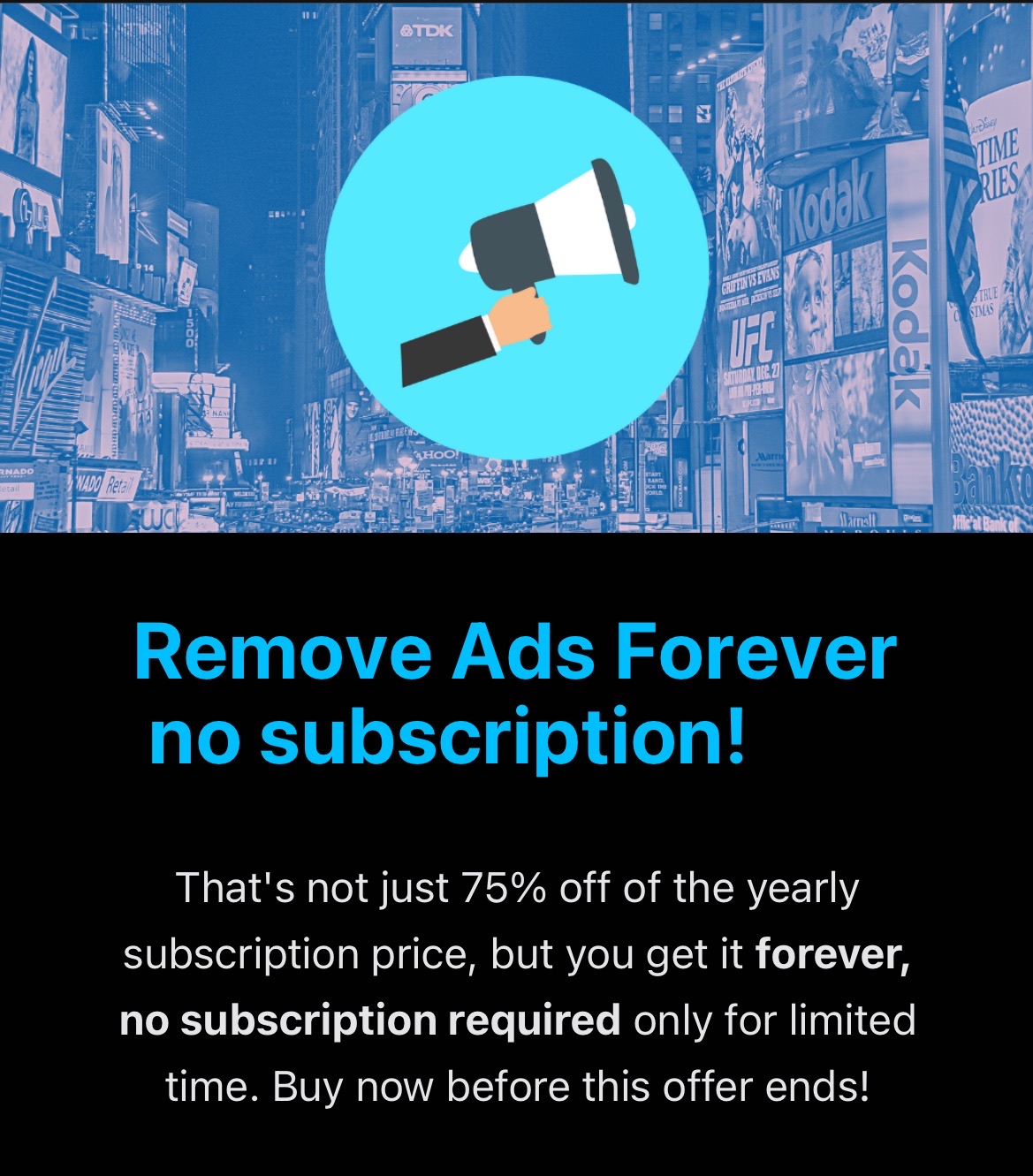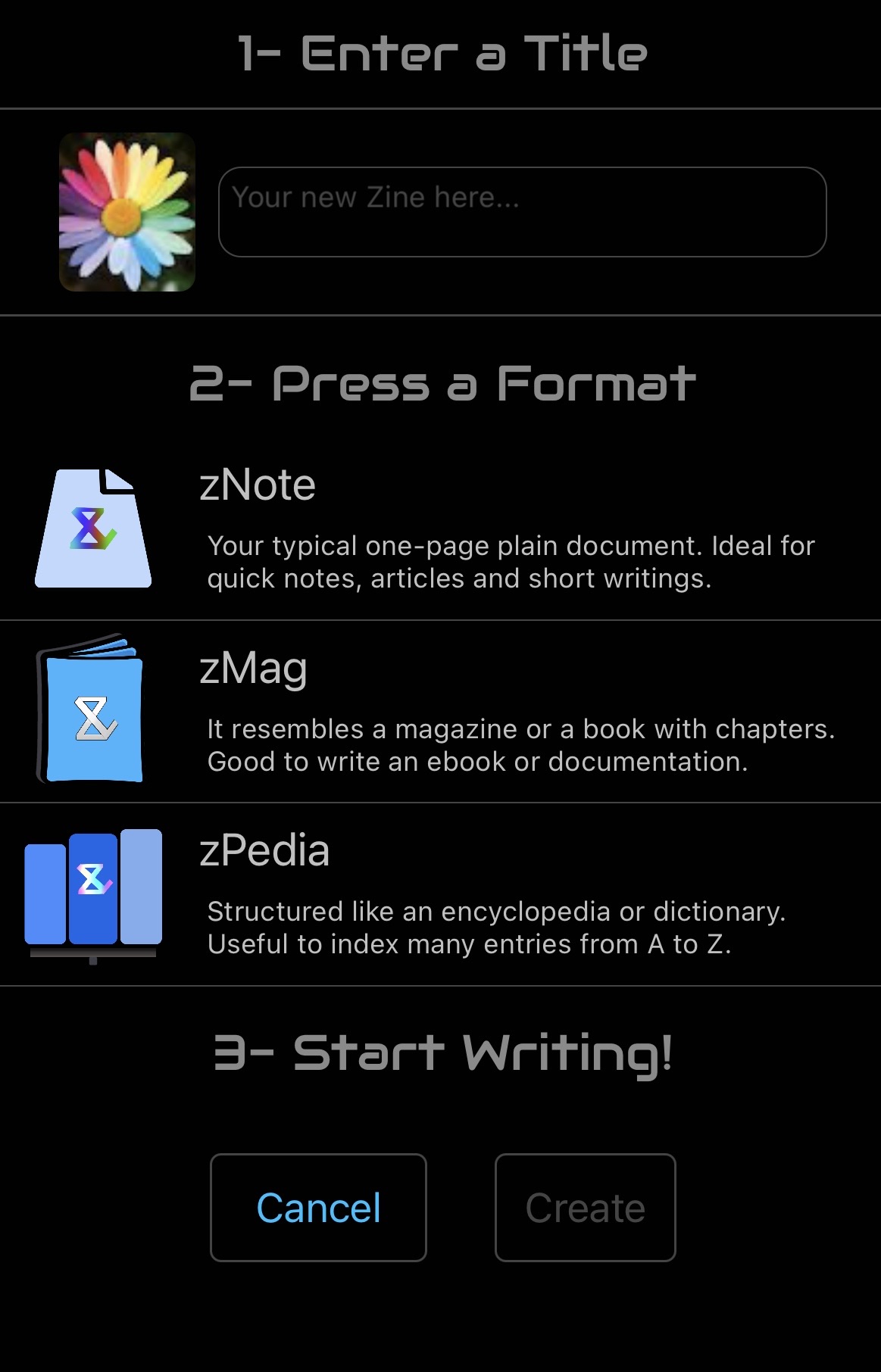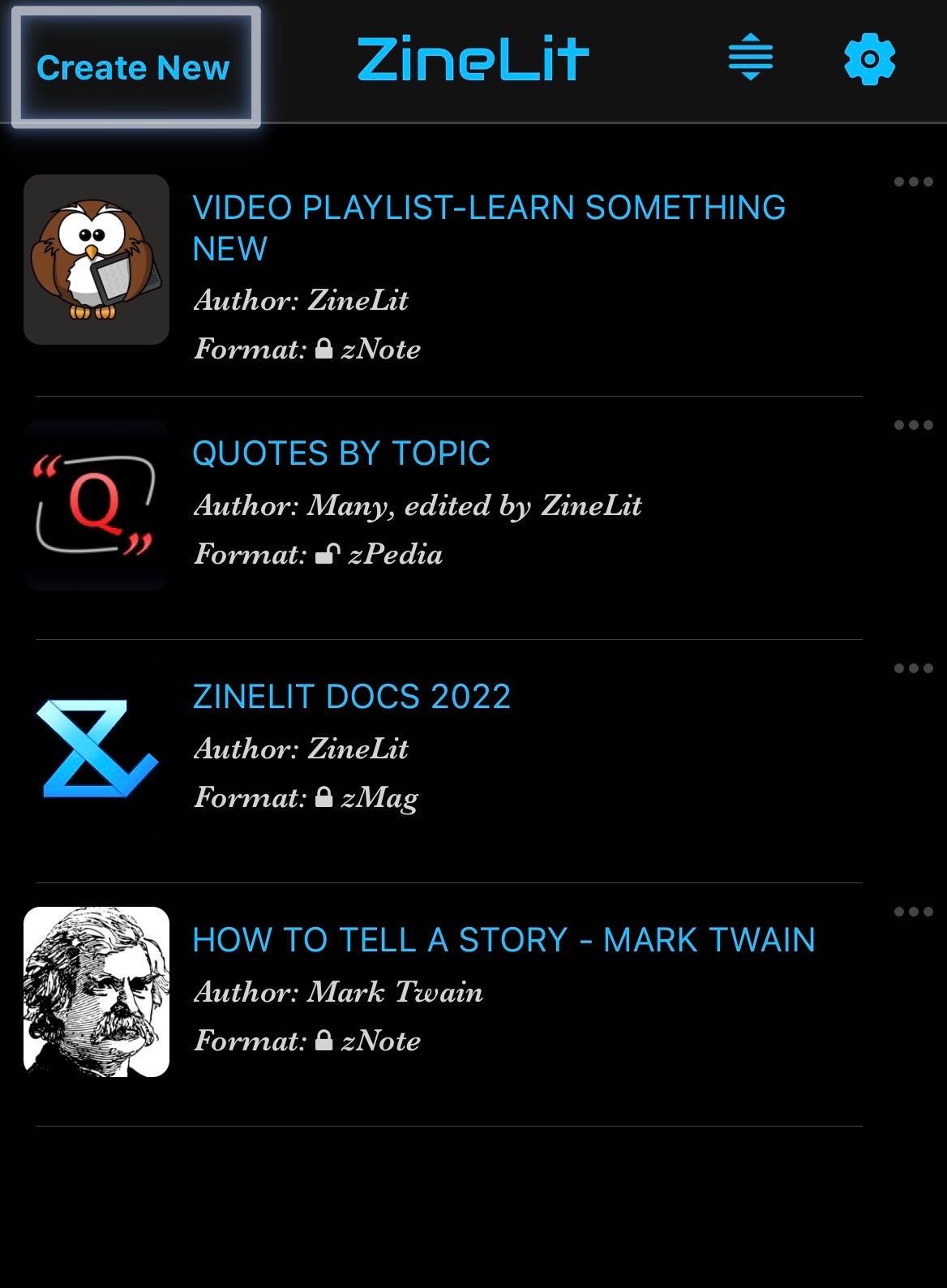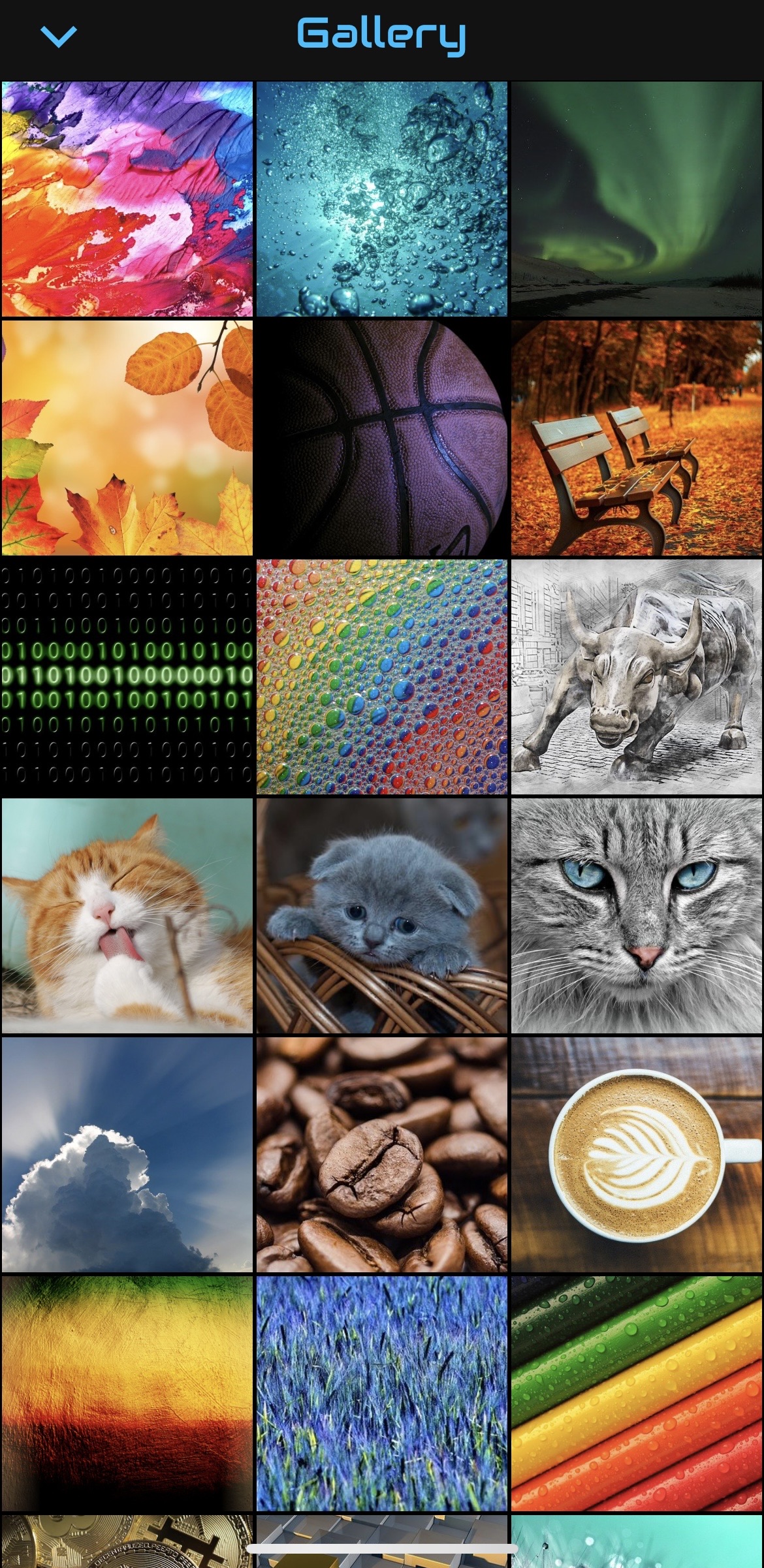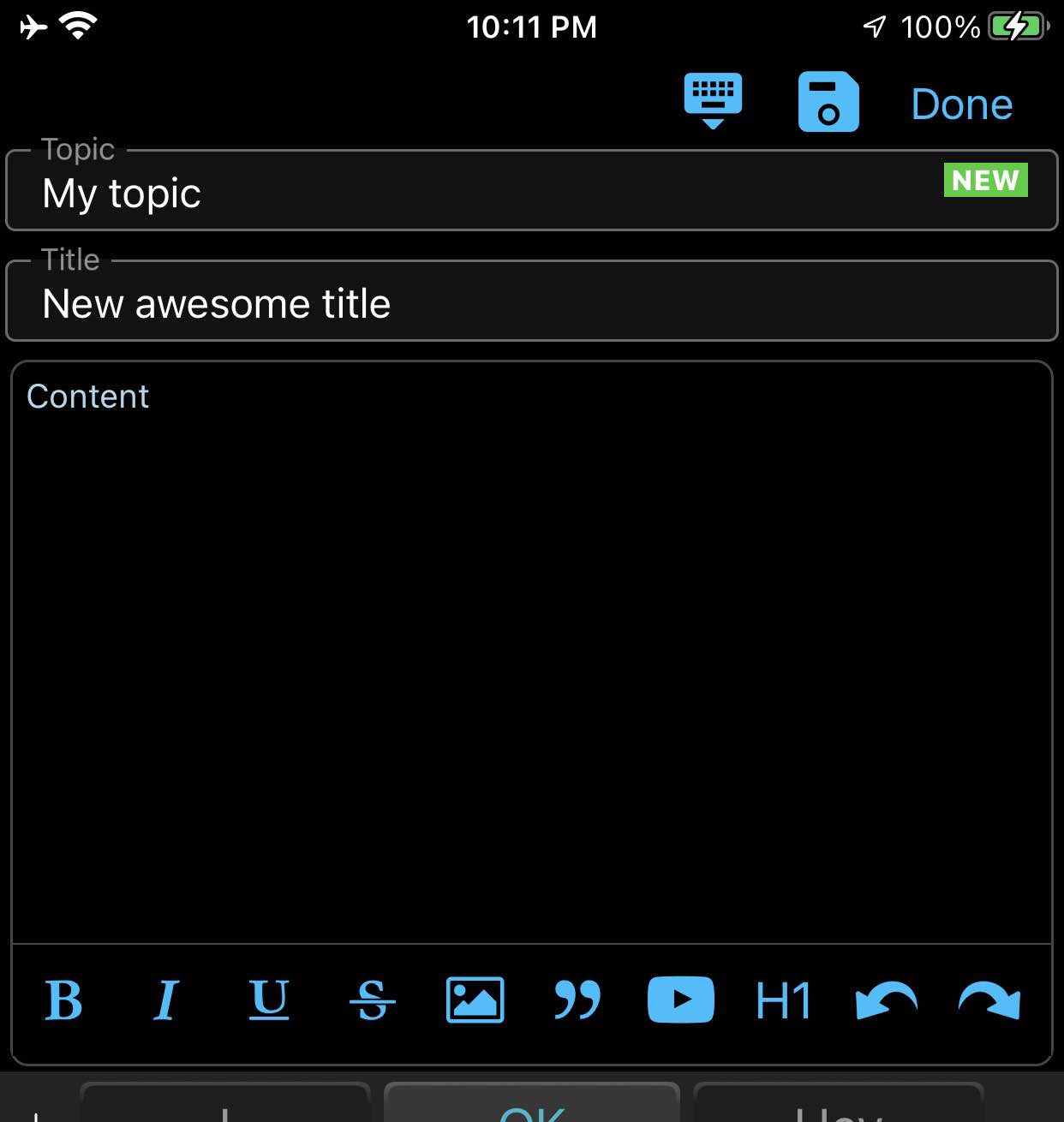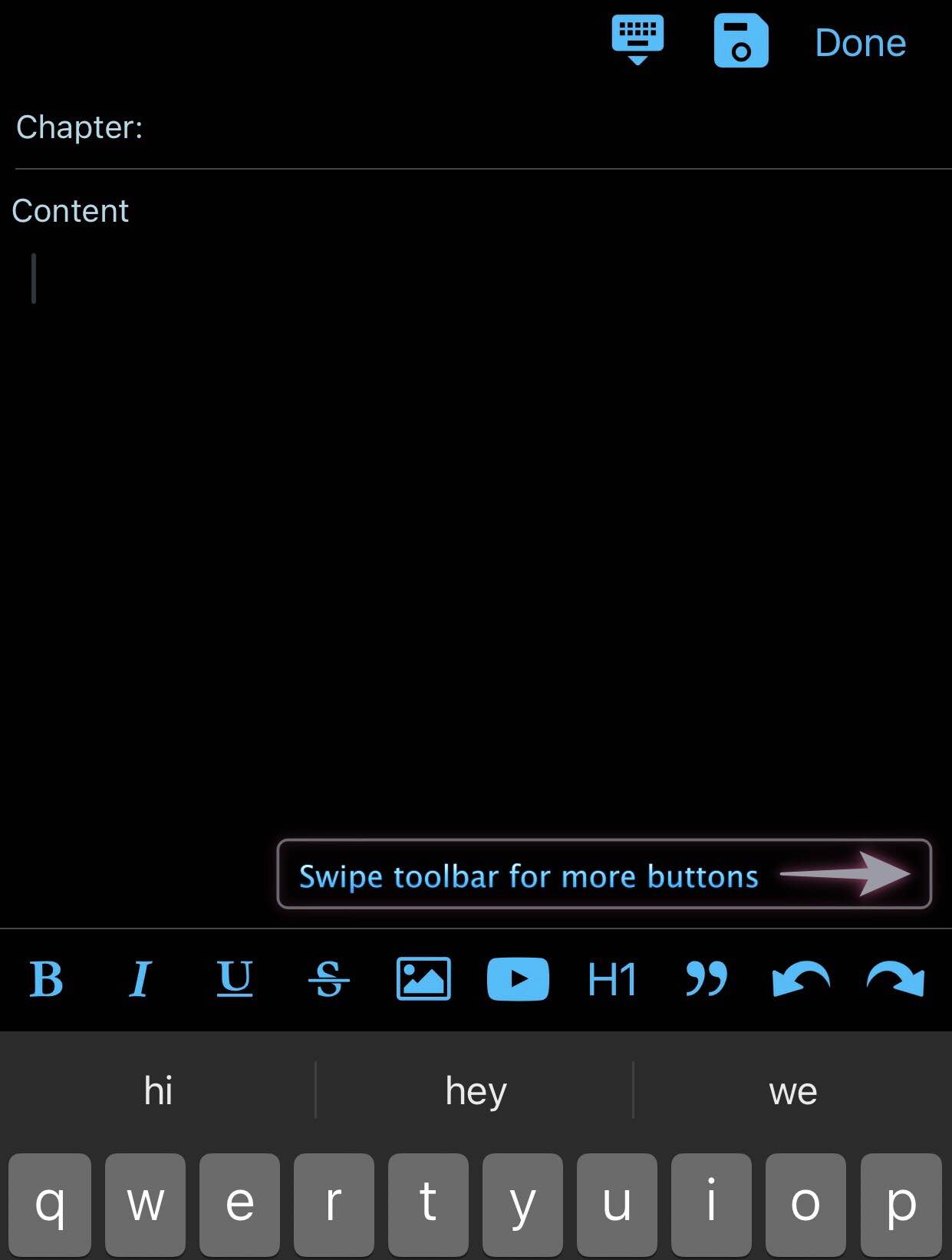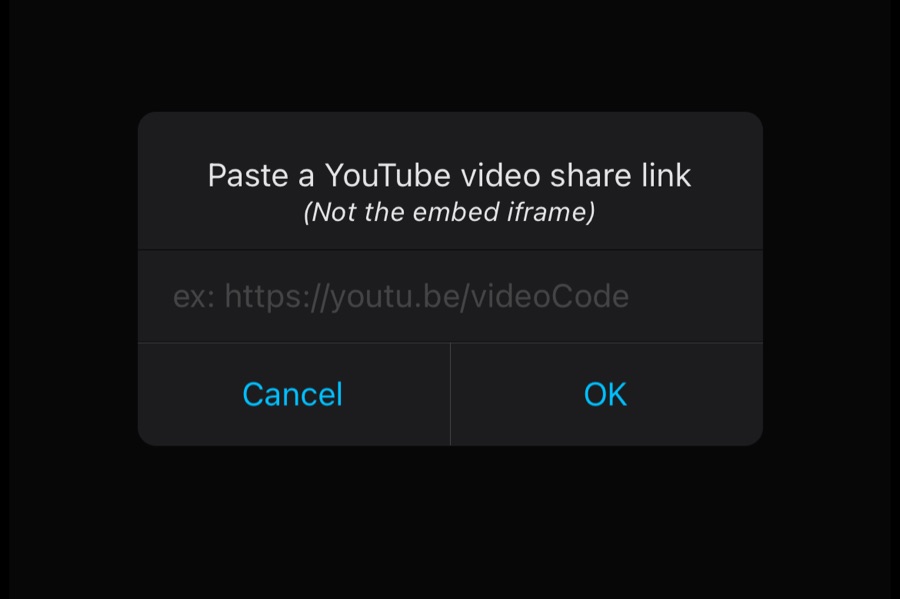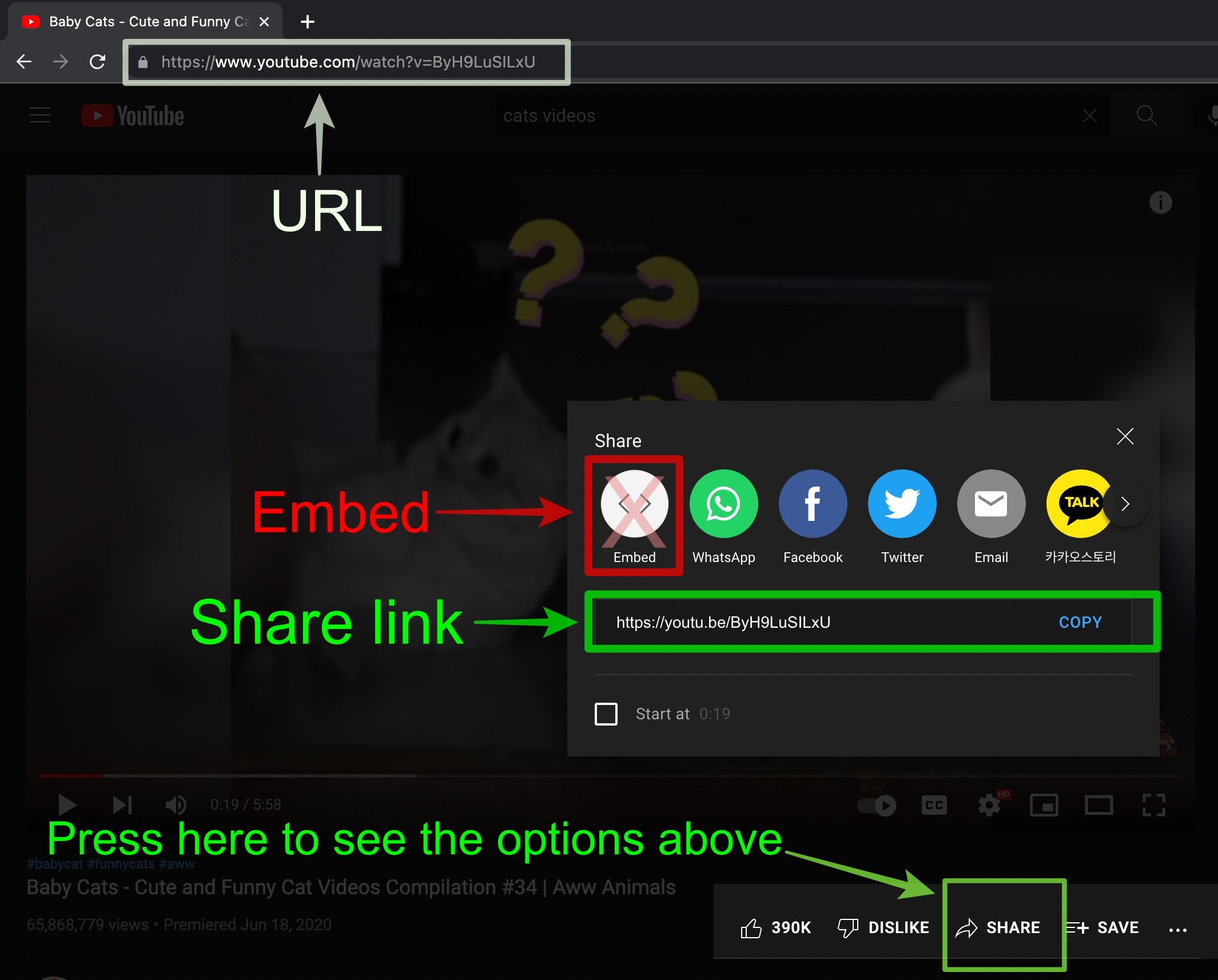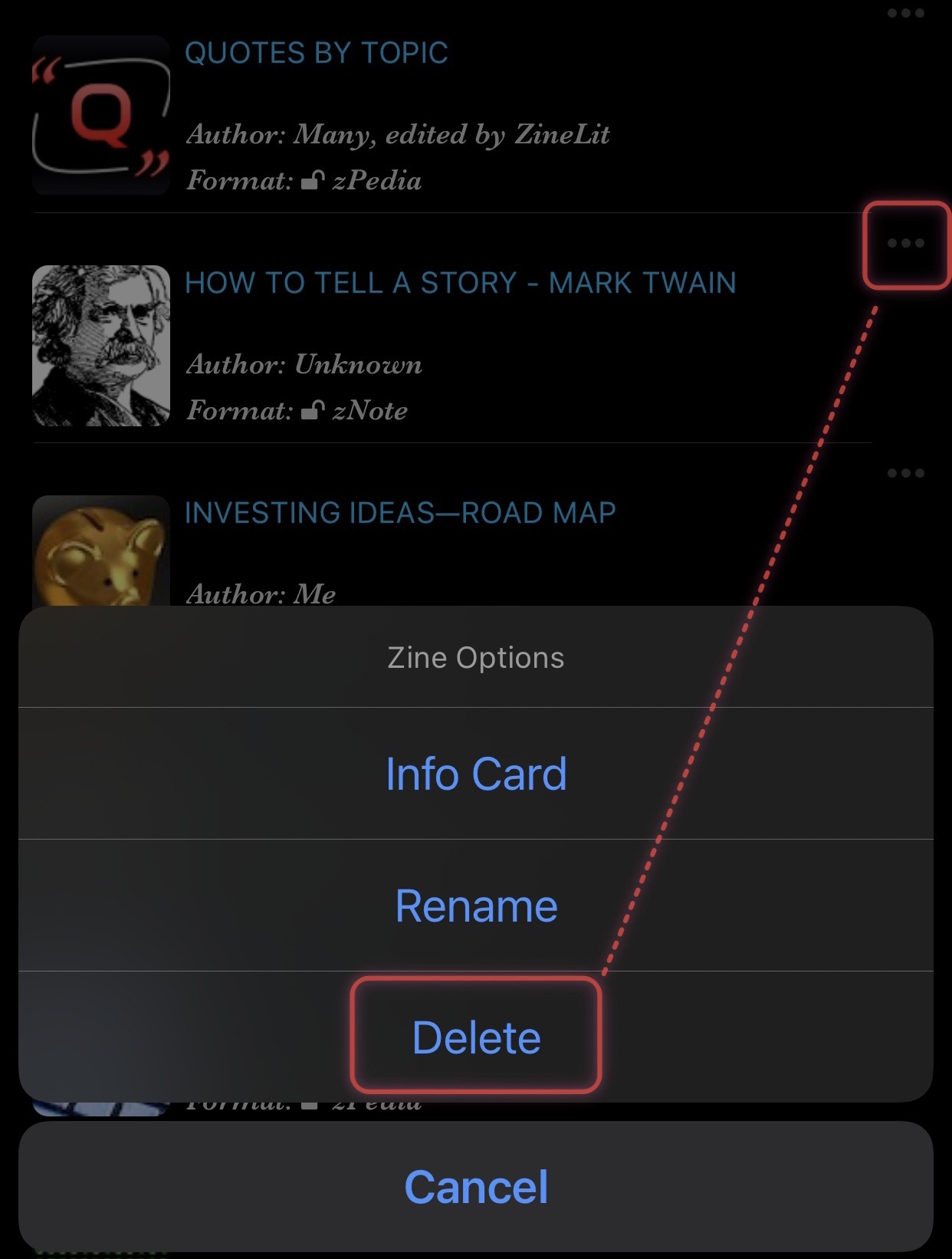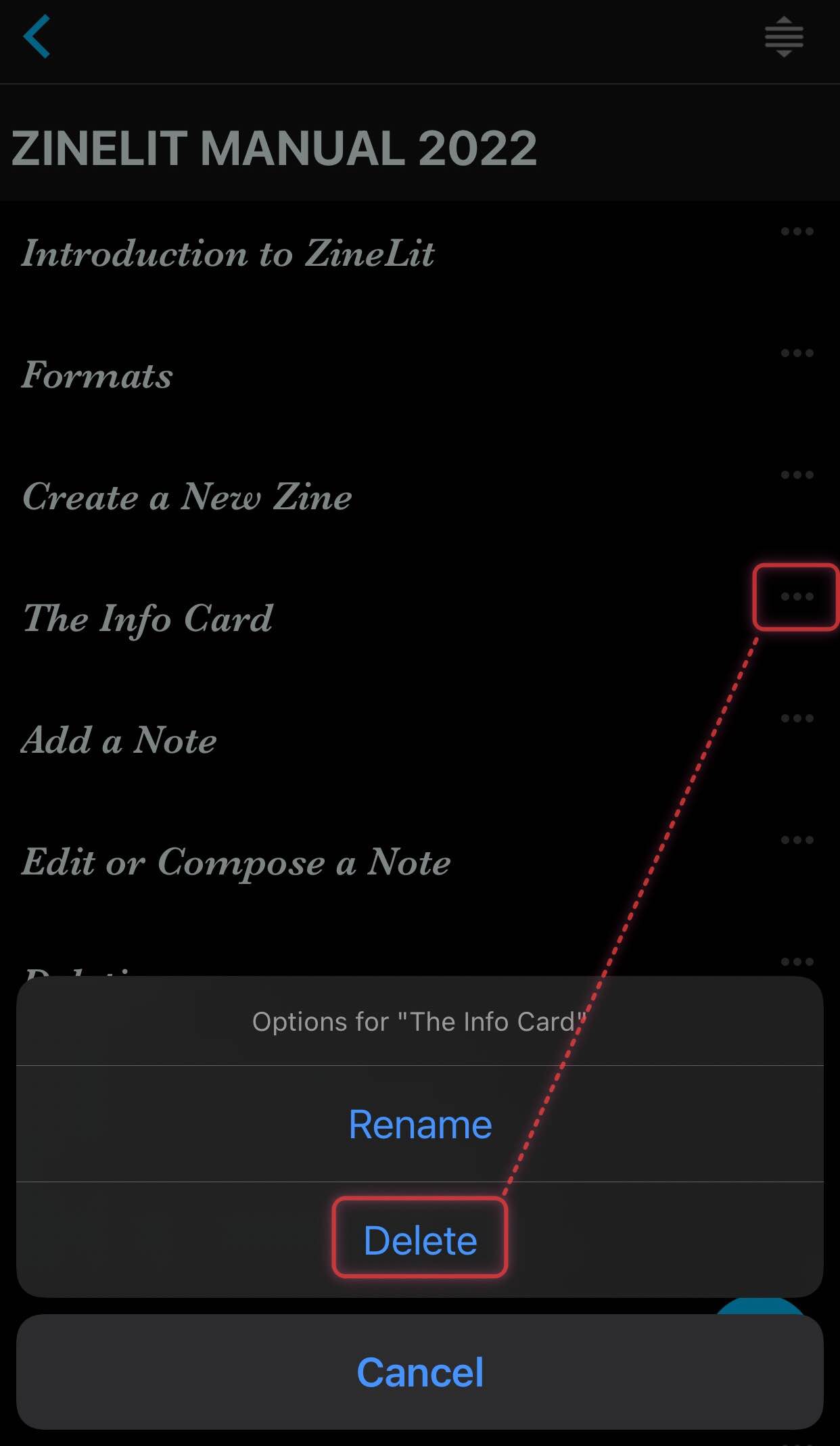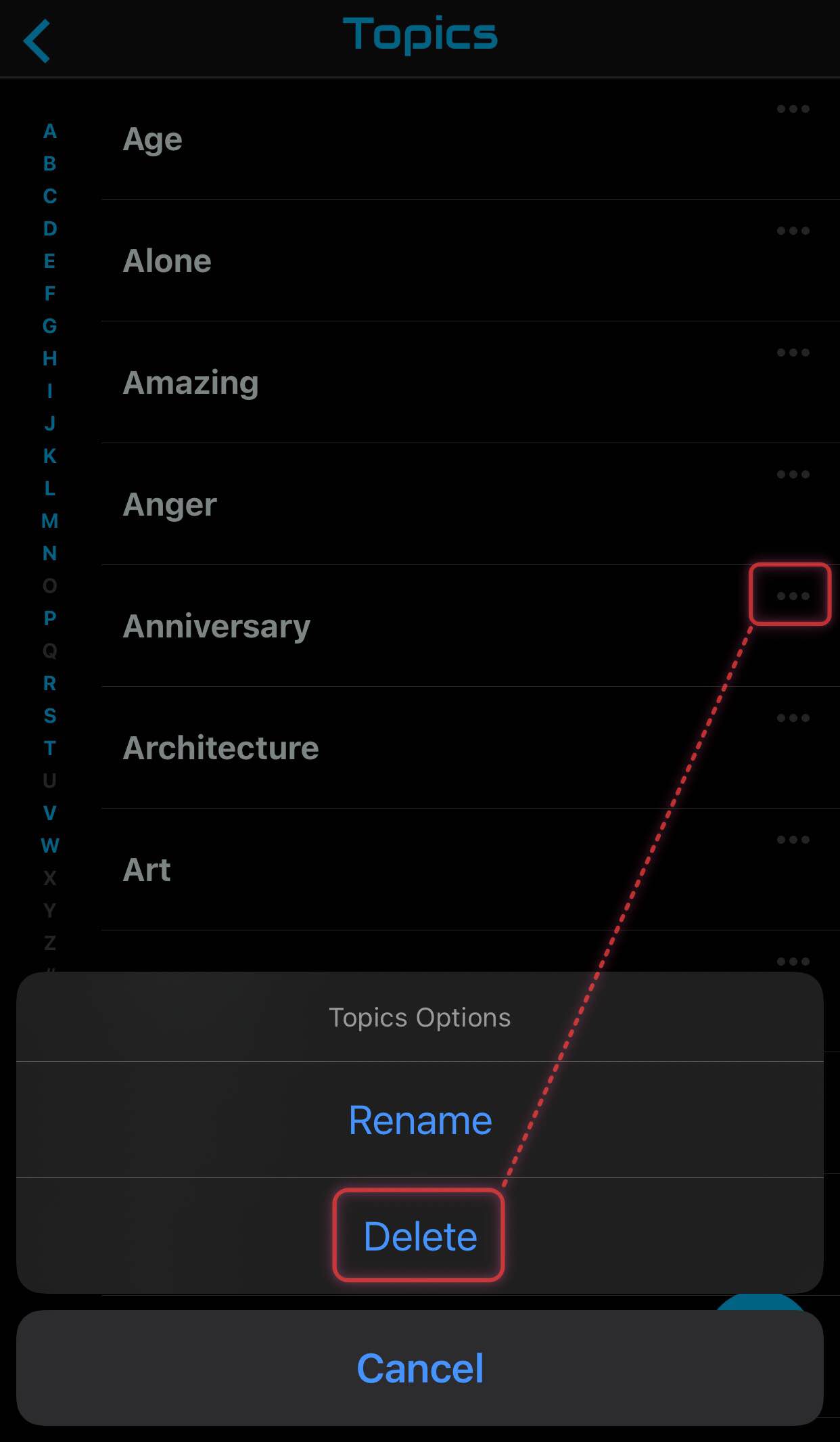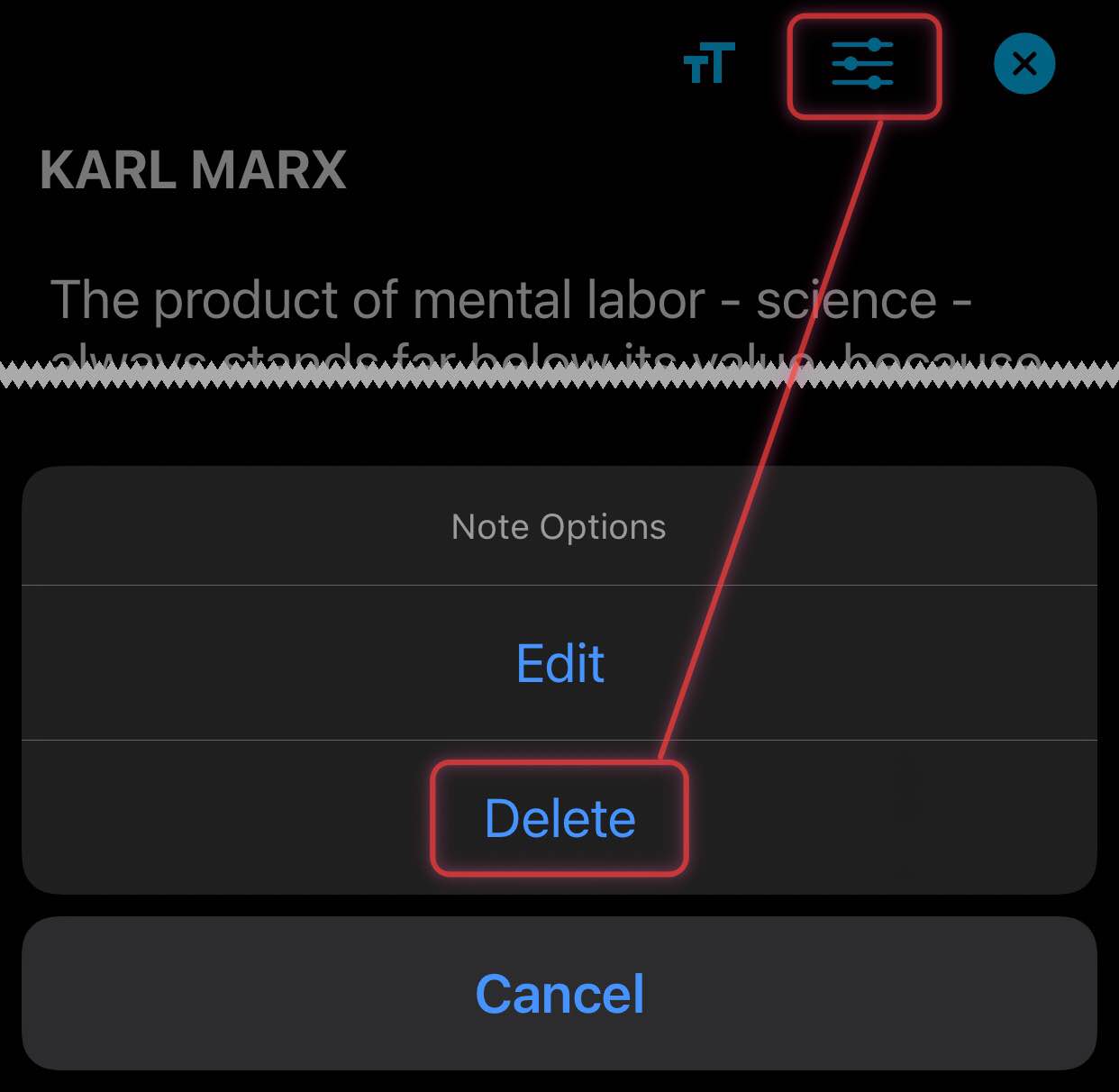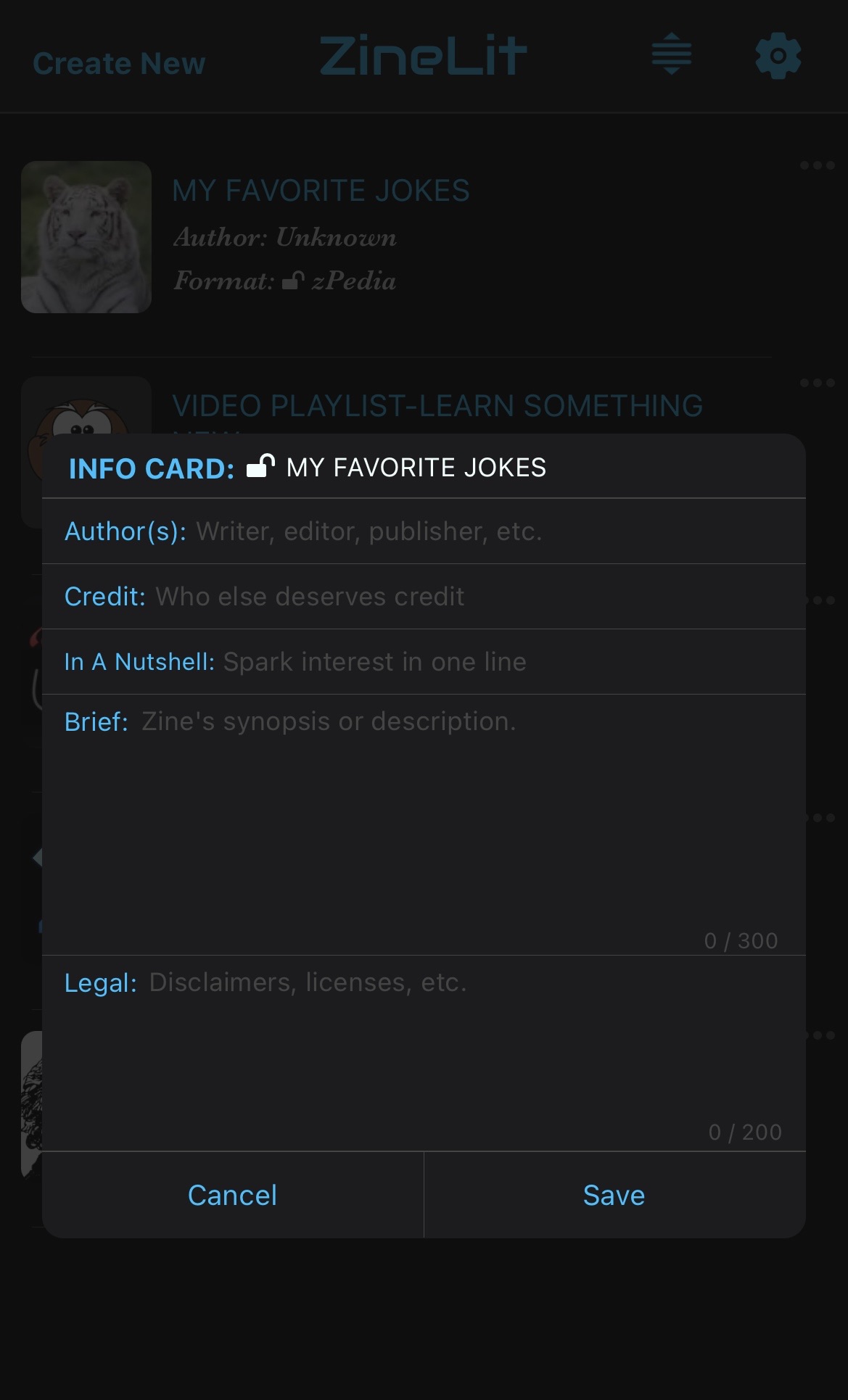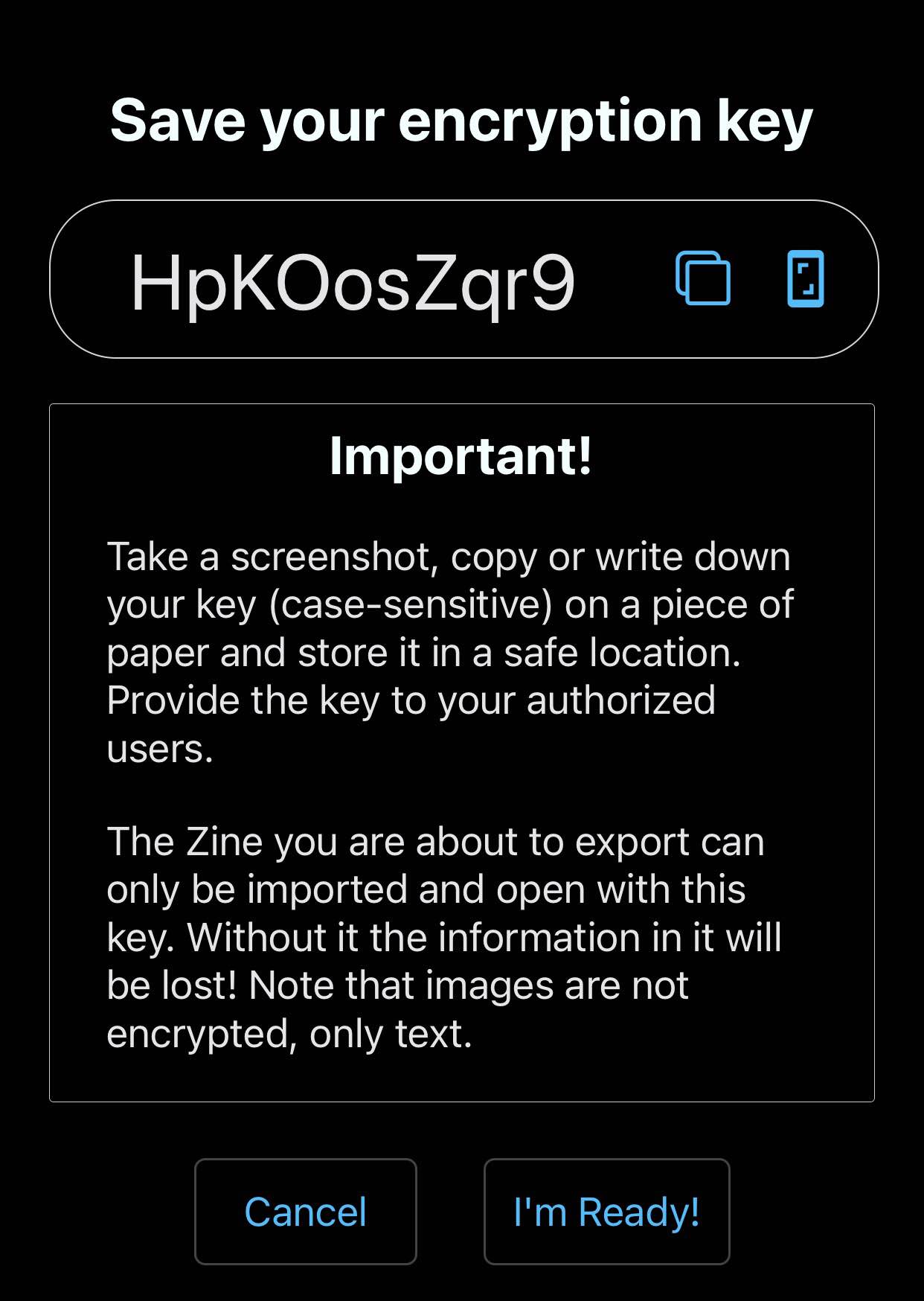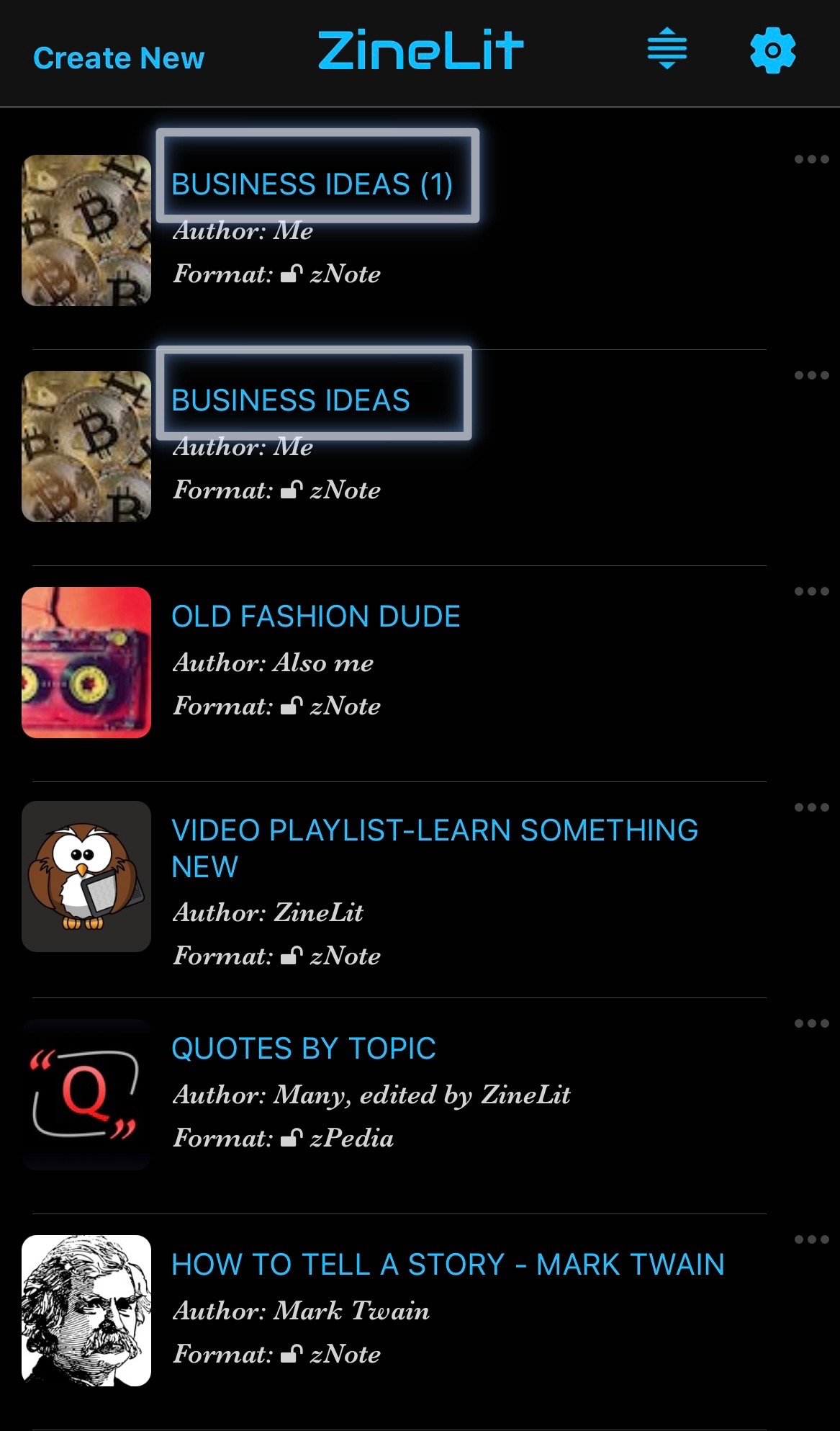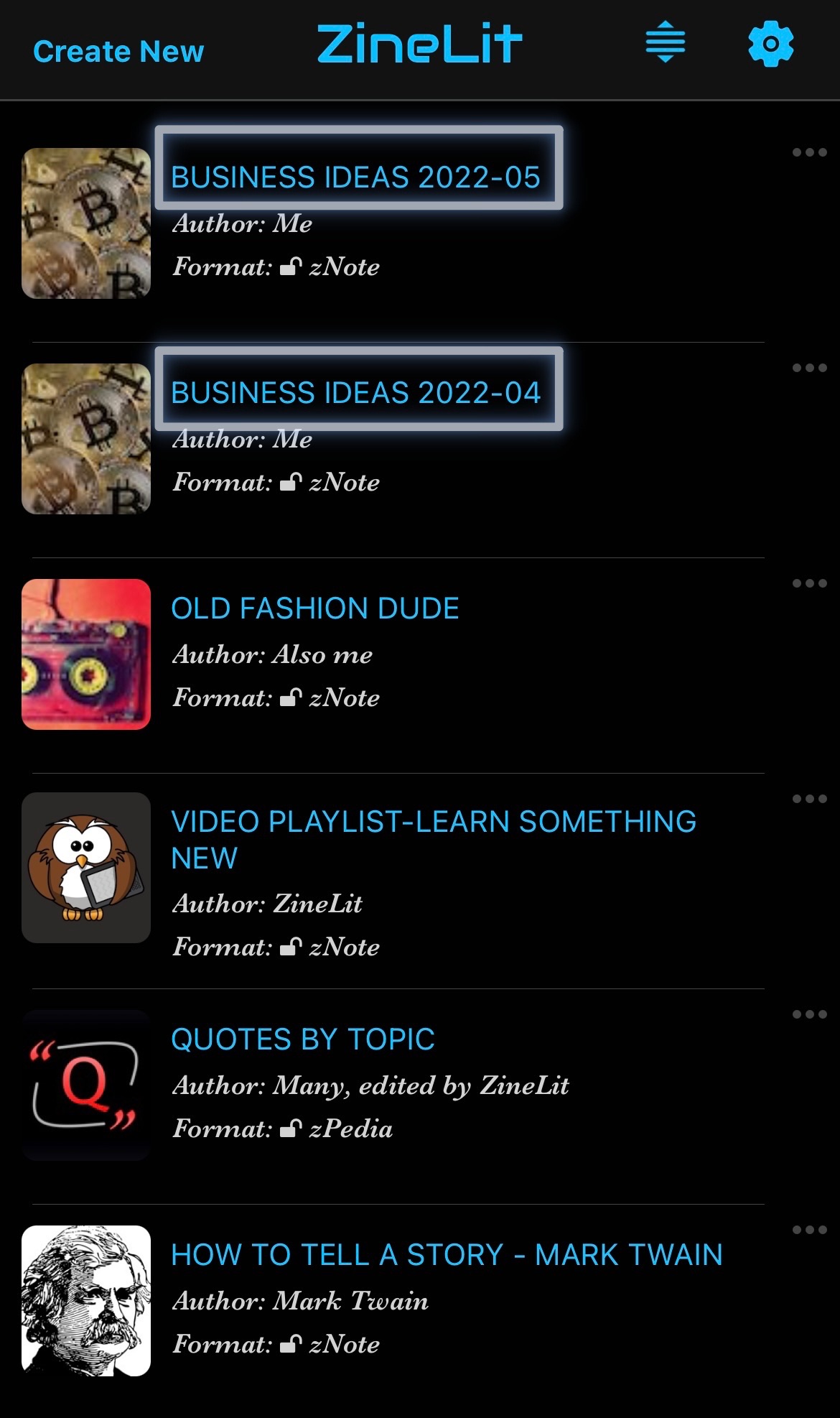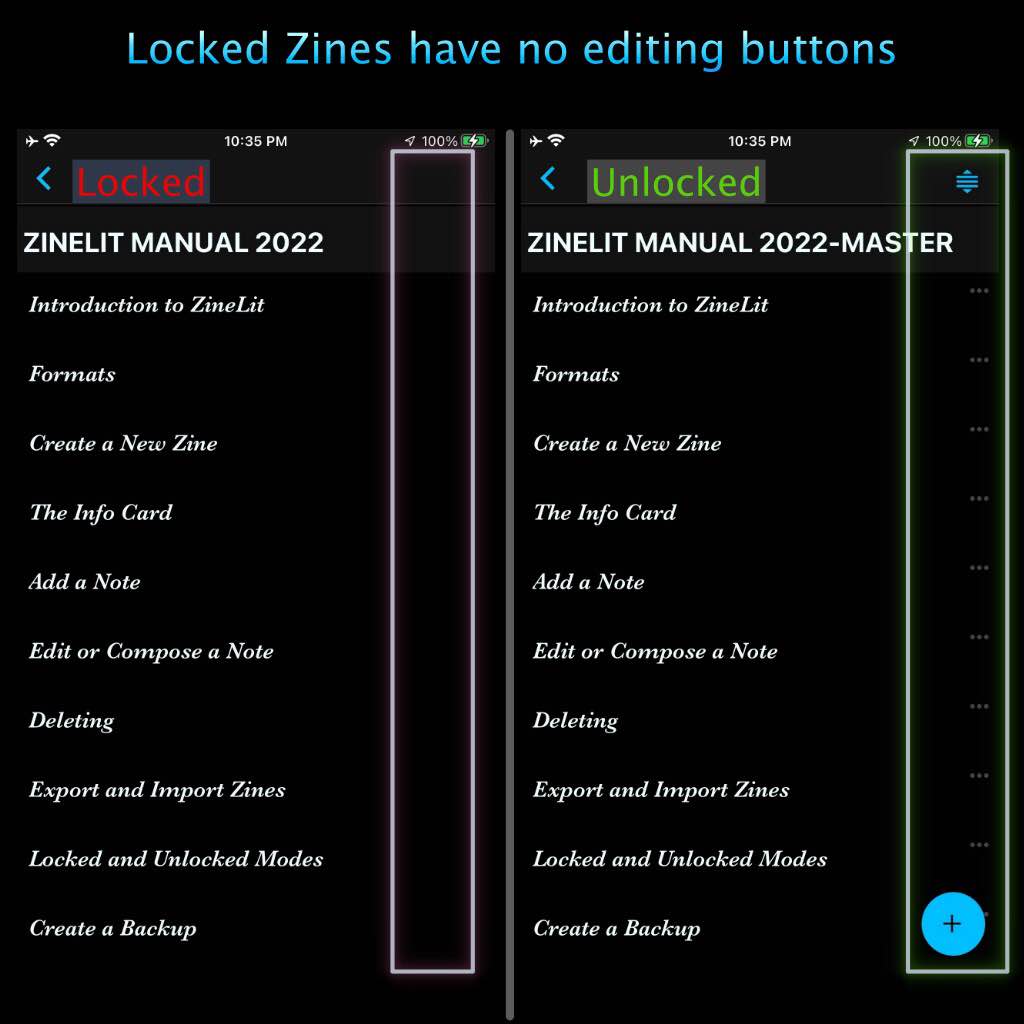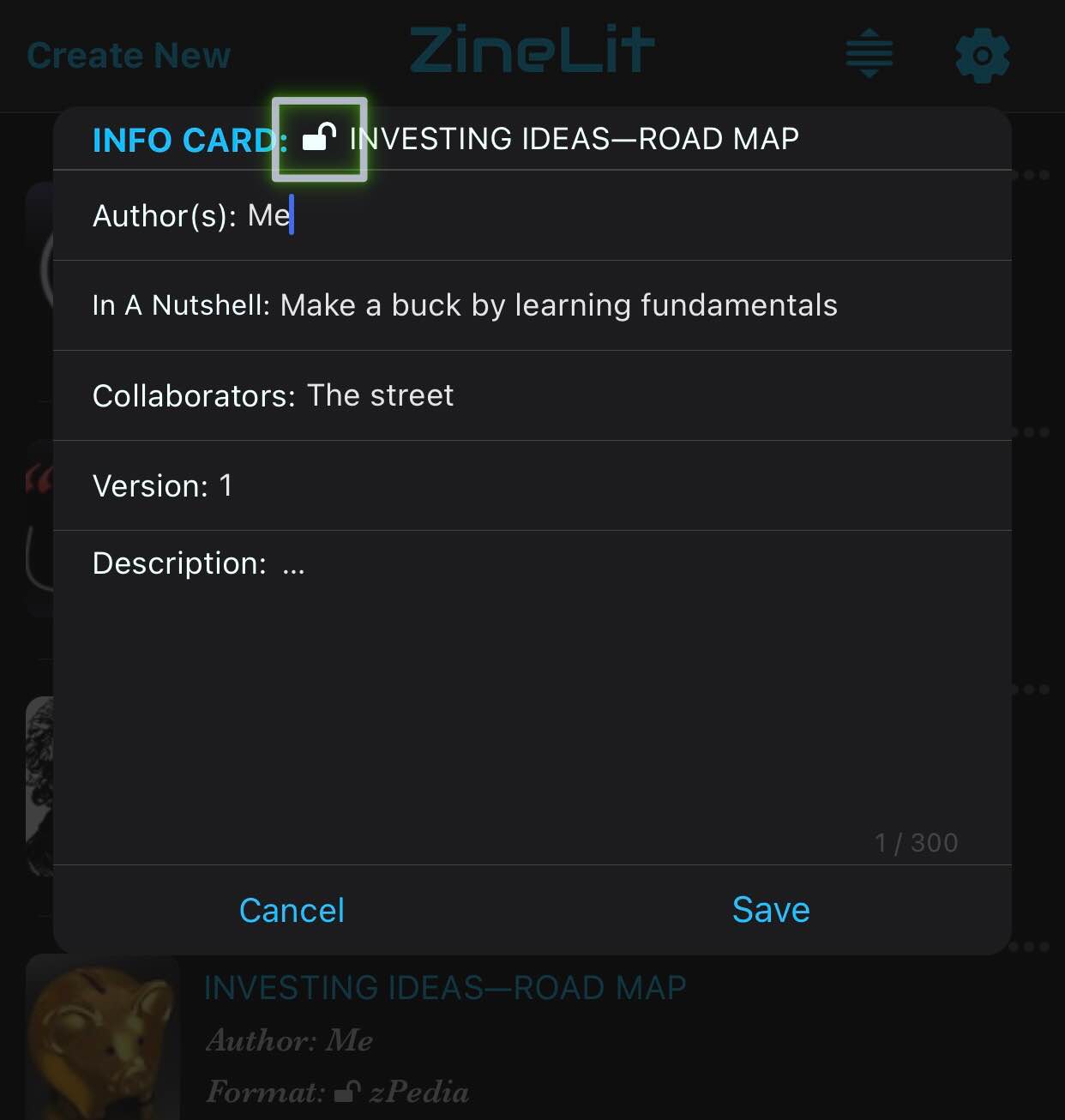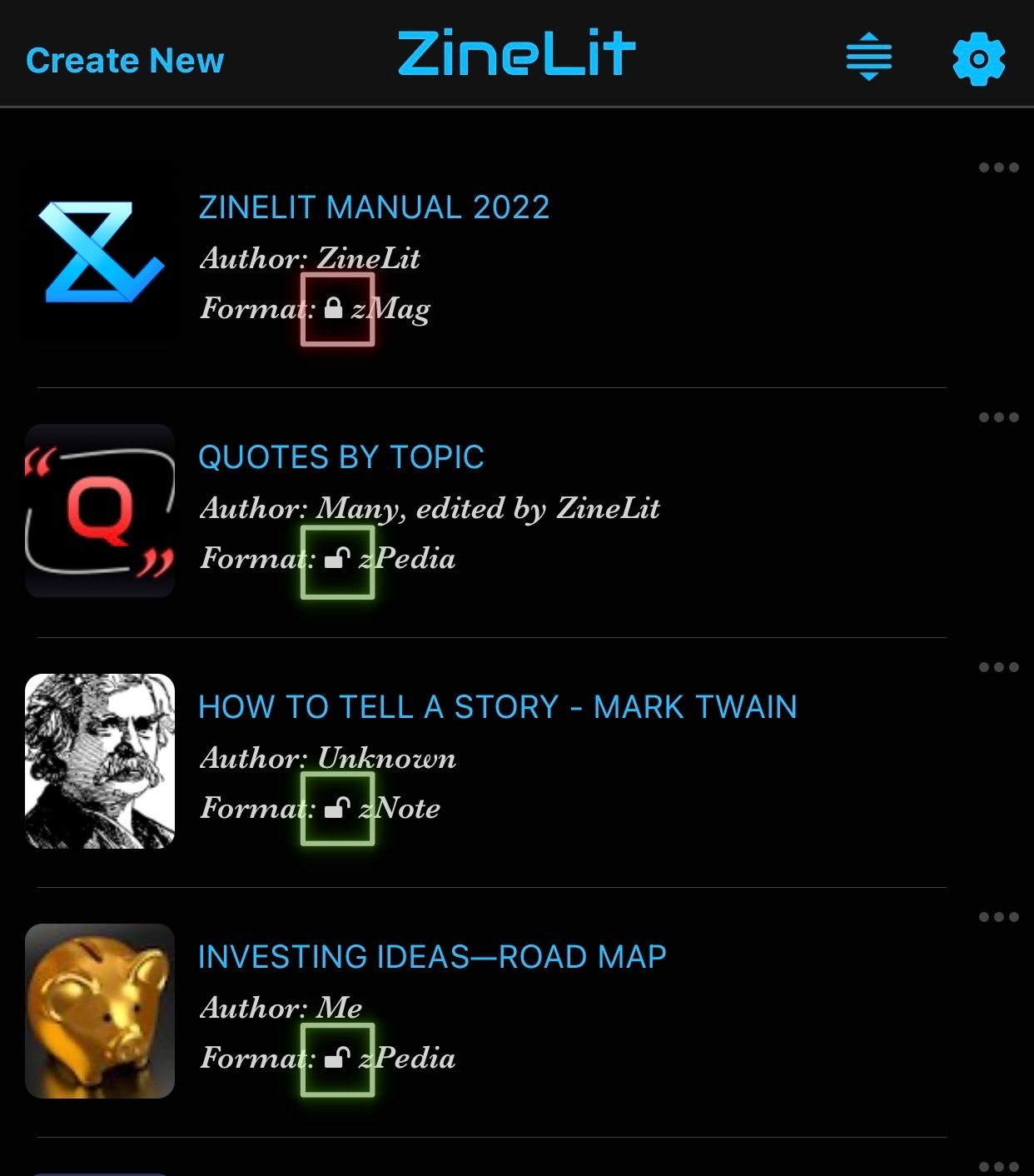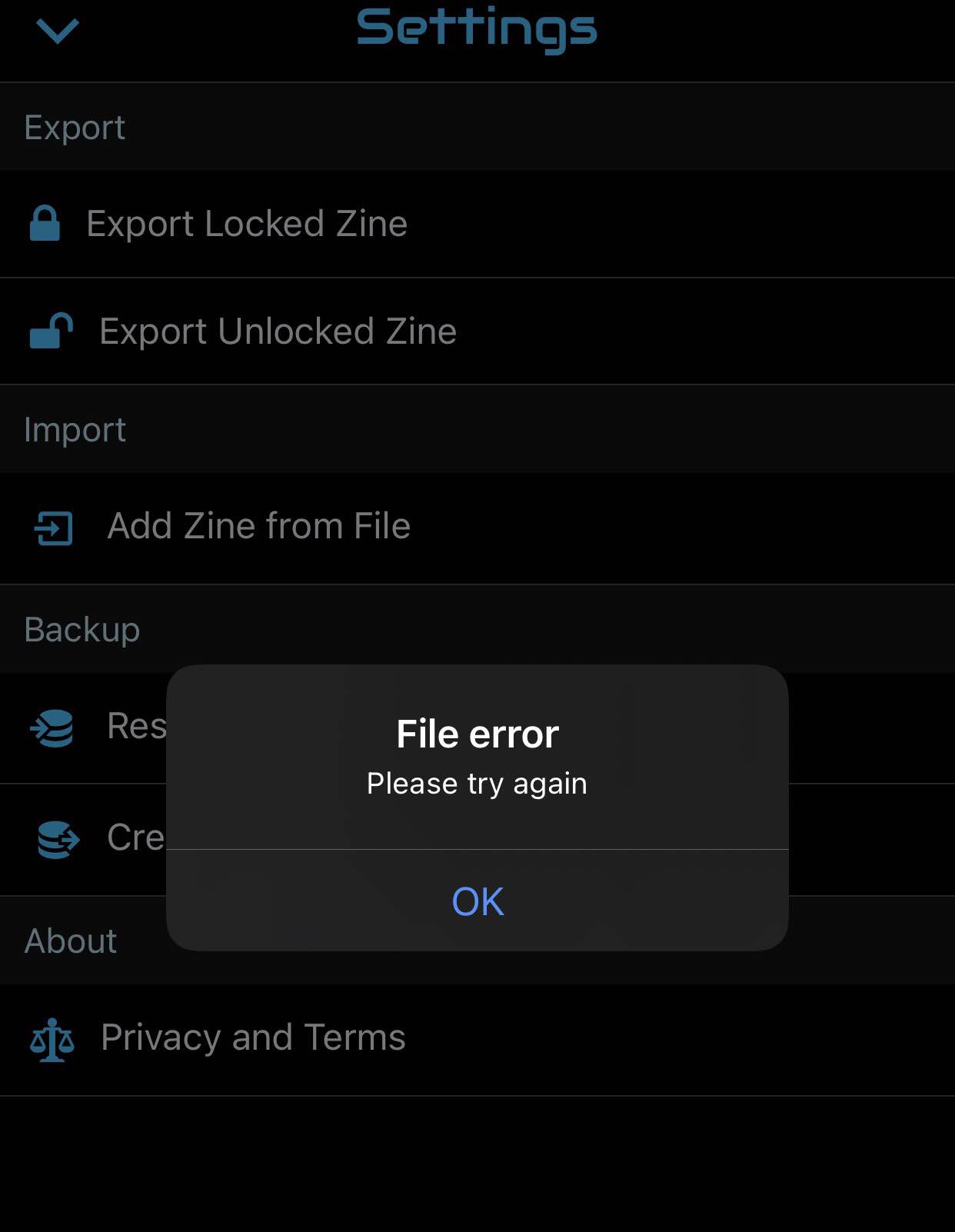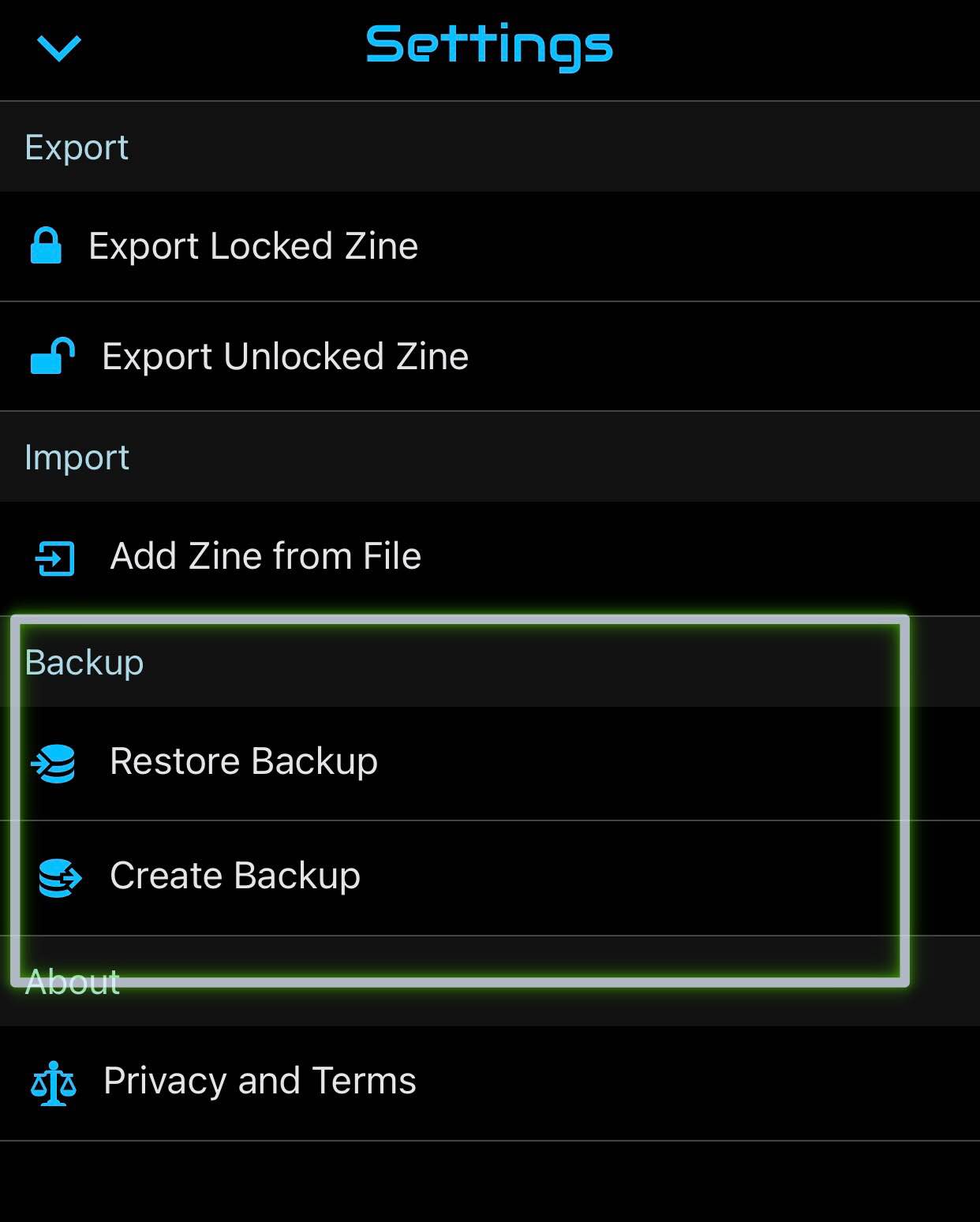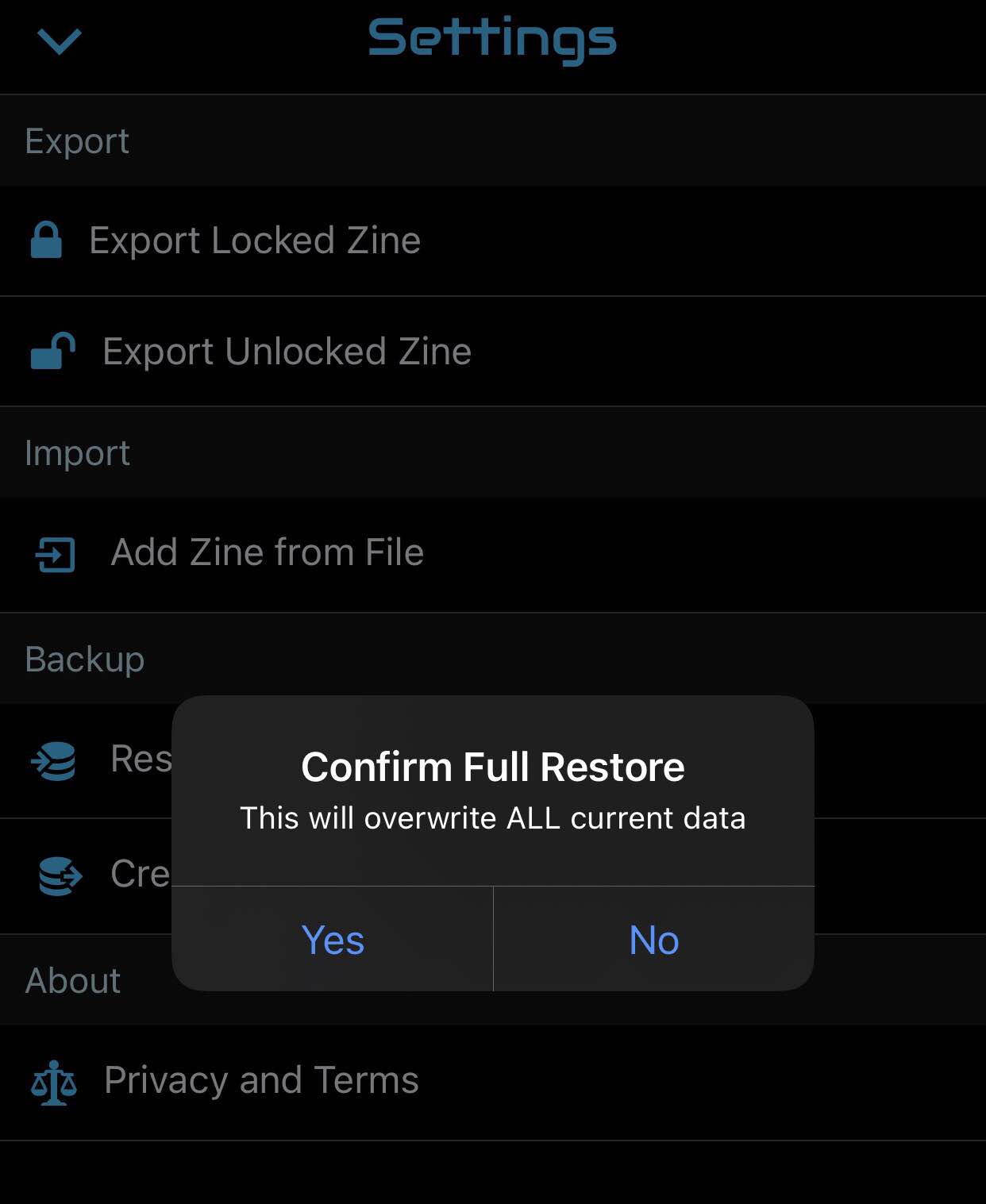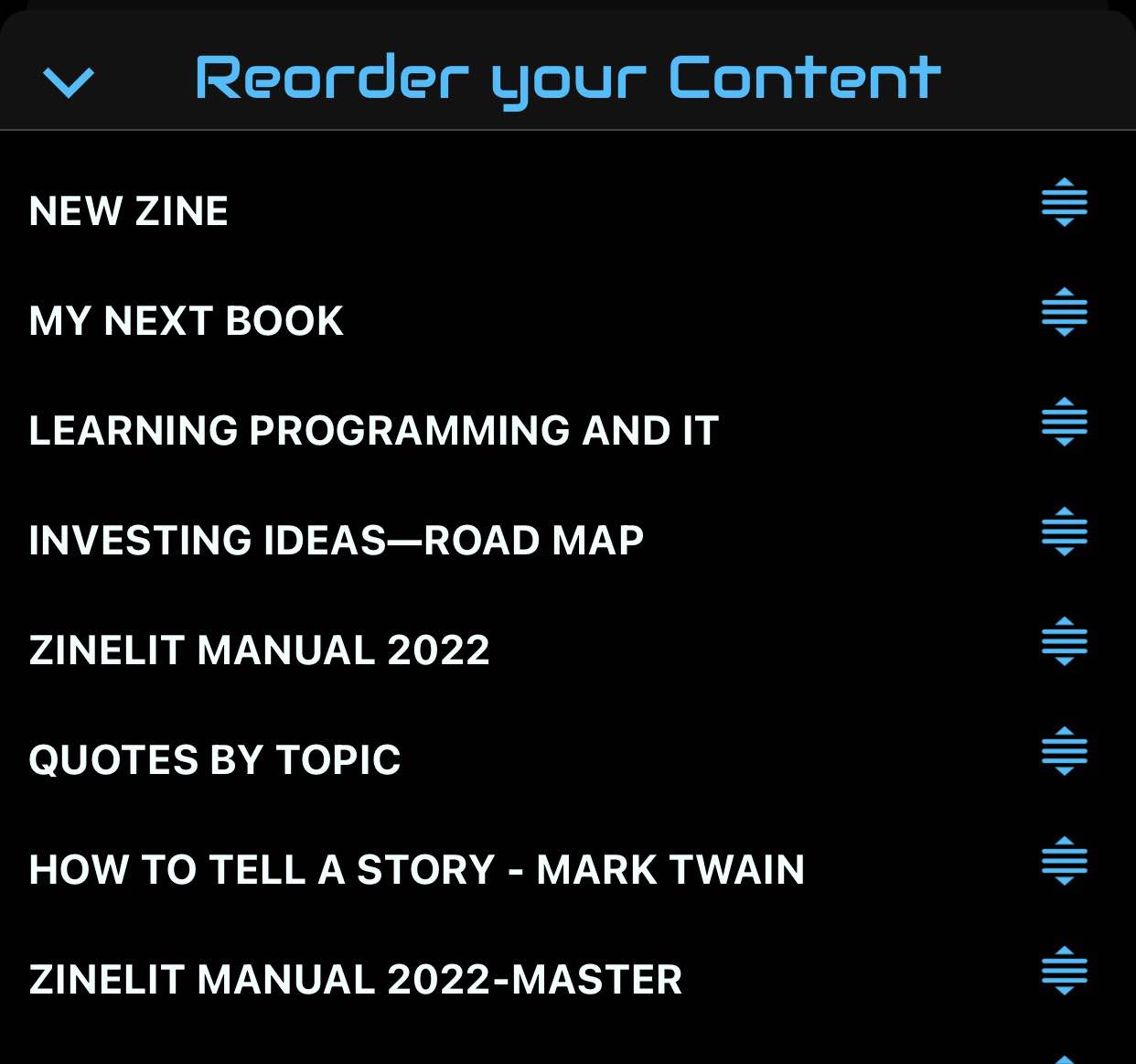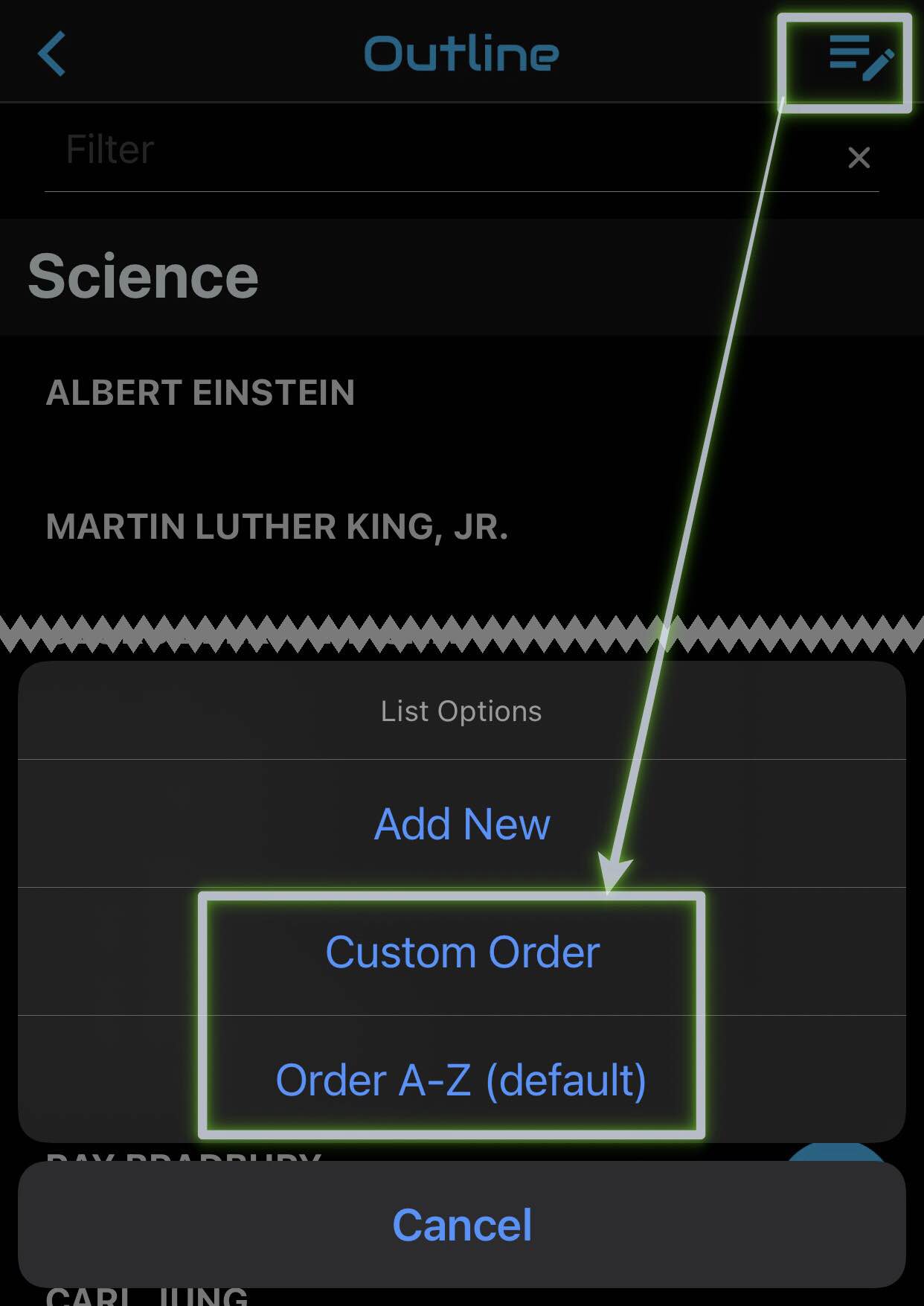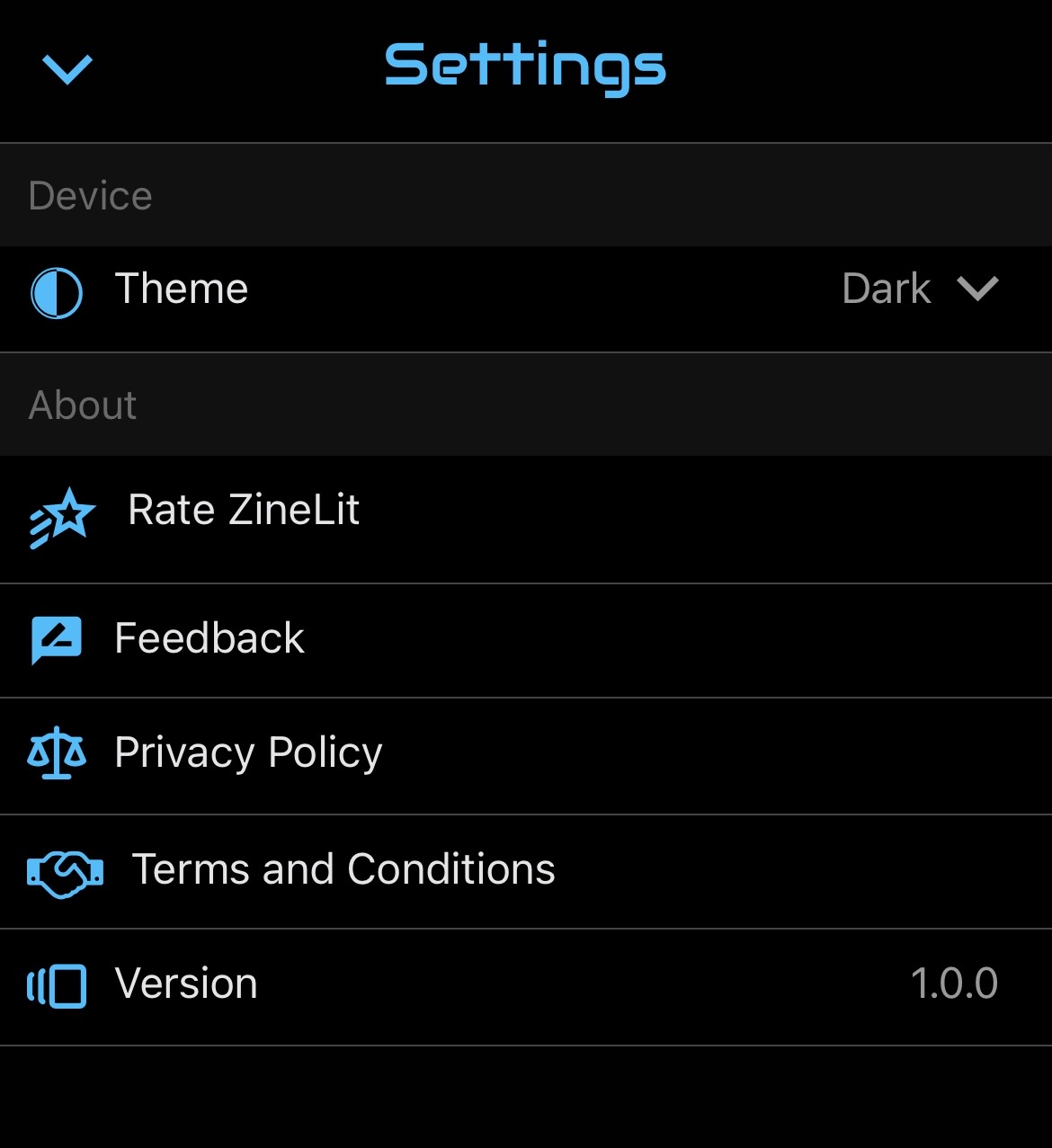Introduction to Zinelit
Welcome to ZineLit!
This manual provides documentation for you to learn ZineLit's features. ZineLit is a free app designed to help you organize your notes. It facilitates sharing them as digital books. You can pick between three formats to structure your content:
- zNote
- zMag
- zPedia
These formats resemble types of writings in the real world, such as a simple note, an article, a book, and even an encyclopedia! The screenshot below shows a brief description. See the chapter Formats for a detailed explanation.
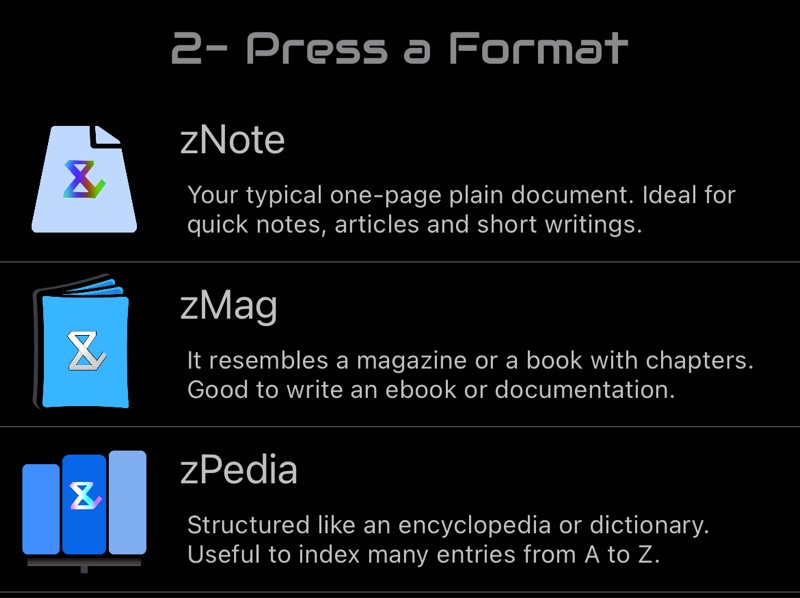
Zine
We called ZineLit's proprietary native eBook type a Zine. This is pronounced zeen, as in magazine.
Zines produced by printing or copy machines are often described as self-published work produced by a single author or a small group to write about, well, anything! (In case you don't know, zines are a thing. Google it 😄) They are vehicles of self-expression and are used to promote artistic, original, bold ideas. ZineLit's zines serve this same purpose but in electronic format. You can write about anything you want and share it with others.
Every time you create a new item on the Home Screen and then give it a name you are creating a Zine. Exporting an individual Zine generates a file with the extension zine, as in MyFile.zine. Zines can only be created and open in ZineLit.
Offline-first App
ZineLit is an offline-first app. You do not need an internet connection to create, read, or update your Zines. Your data is stored locally on your device and it is always available. Naturally, certain tasks like opening web links or watching embedded YouTube videos do require a network connection.
Electronic Publication Properties
ZineLit is much more than a note-taking app. A main feature of ZineLit is that it can turn your notes into a digital publication. An exported Zine shares similarities with eBook types and digital files such as EPUB, MOBI, and PDF. Of course, each format has its advantages and disadvantages. Here are some cool things you can do with ZineLit:
- You can create unlimited Zines right on your device. It is as easy as taking notes.
- As mentioned above, you have 3 formats to choose from.
- You can export a Zine and share it with your readers and friends.
- The exported Zine can be either locked (cannot edit) or unlocked (can edit). See chapter Locked and Unlocked Modes for more details.
- When you lock a Zine, you can opt to lock it with or without a key. Both options lock the Zine for edits. In the first case, a key will be randomly generated, and it will be required to import and open the file in ZineLit. Conversely, without a key, the Zine can be installed by any person in possession of the file.
- The text content inside any locked zine file is encrypted.
- Unlike PDFs, you can adjust the font size of a Zine in ZineLit.
- Unlike the EPUB and MOBI formats, you can generate and share unlocked Zines that are editable. This means that your end-user will be able not only to read but also to freely modify the Zine. For use cases, see the chapter Locked and Unlocked Modes.
- Hardcopy books are good, but you cannot watch YouTube videos on those. ZineLit makes it easy for you to embed YouTube videos and pictures into your Zines. This takes full advantage of the digital nature of a Zine. Combining text, videos, and images makes reading a lot more visual and more appealing to a larger audience.
Backup
As mentioned above, ZineLit is an offline-first app. At the moment, it is not possible to sync data across devices. However, you can create a backup by exporting all your data, including text and media, to an external drive or to a cloud storage service such as Dropbox, iCloud, or OneDrive. The exported backup file will have the extension zbak, as in MyBackup.zbak. For more information, see the chapter Create a Backup.
Languages
At the moment, ZineLit works optimally in English. We are aiming to fully support other languages in the future, which includes translating the text of the app's interface. You may write notes in other languages but please be aware of the limitations mentioned below.
The app has been tested in other languages using Roman letters, and it works well with a few caveats. For instance, the alphabetical sorting feature doesn't order the list correctly if the first letter of the word has diacritic marks, such as "É", "Ñ" and the like. Such words may be positioned incorrectly at the end of the list. As a workaround, you could avoid using diacritics on the first letter of topics or titles that can be reordered alphabetically.
We tested the app using Chinese characters. Writing notes in Chinese (both in the Simplified and Traditional scripts) works well but again there are a few caveats. Obviously, Chinese characters cannot be sorted alphabetically. We have no support for Pinyin. Also, on the Topics screen, you will not be able to save a topic unless it starts with a Roman character. As a workaround, you may add the initial of the Pinyin notation as the first letter of your topic. For instance, the term "中文" could be written "Zh 中文" so that ZineLit can sort it using the letter Z.
